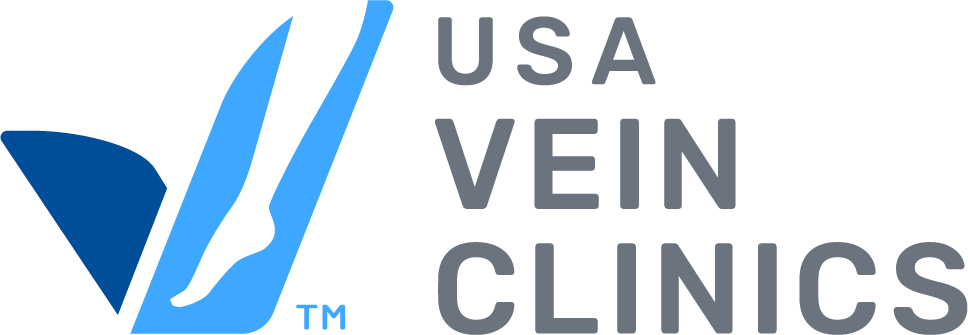Varicose veins are caused by underlying vein disease or venous insufficiency. This condition arises when tiny, one-way vein valves become damaged and begin malfunctioning, causing blood to flow backward or pool in place. This puts extra pressure on the vein walls and valves.
Fortunately, modern medical advancements have introduced a range of minimally invasive treatments that provide effective relief. These procedures address the symptoms caused by varicose veins without the need for traditional, invasive surgery.
Varicose Vein Surgery vs. Minimally Invasive Vein Treatment
Choosing the right treatment is key for long-lasting relief from varicose veins. While traditional varicose vein surgery once required more invasive procedures with extended recovery times, today’s minimally invasive options are now safer, more convenient, and equally effective.
| Varicose Vein Surgery | Minimally Invasive Treatment | |
| Anesthesia | Requires general or spinal anesthesia. | Only local anesthesia is used (numbing of the treatment area). |
| Incisions | Two larger incisions, one in the groin and one below the vein. | Only a small incision or needle puncture is required. |
| Need for Stitches | Stitches are required to close the incisions. | No stitches are required. |
| Procedure Duration | Longer surgery requires more extensive operating room time. | Typically 15-30 minutes, performed as an outpatient procedure. |
| Post-Treatment | Patients cannot drive home and need time off work for recovery. | Patients can drive home and return to work immediately. |
| Recovery Time | Up to 4 weeks; soreness and pain are common post-surgery. | Little to no recovery time; patients can resume daily activities immediately. |
| Complications | Higher risk of bruising, hematomas, infection, and other complications. | Lower risk of complications such as bruising or infections. |
| Risk of Side Effects | Higher risk of severe side effects due to its invasive nature. | Lower risk of side effects; less invasive. |
Understanding Varicose Vein Stripping Surgery
Varicose vein stripping surgery removes a damaged vein from the leg. Before surgery begins, the patient must be placed under general or spinal anesthesia. Next, the surgeon makes two incisions, one below the damaged vein and another in the groin. The surgeon then ties off (ligates) the vein to halt blood flow, removing the vein from the body. Finally, stitches are used to close the incisions. The procedure causes the body to reroute blood through healthy veins.
While surgical varicose vein removal procedures do improve symptoms, leg vein surgery has significant drawbacks:
- Anesthesia: Vein stripping surgery requires either that the patient be fully sedated using general anesthesia or numbed from the waist down using spinal anesthesia. These types of anesthesia typically take a few hours to wear off.
- Invasive: Surgery for varicose veins involves two incisions, one below the affected vein and one above, near the groin. These incisions must be large enough to insert the necessary tools into the body and remove the targeted vein. Stitches are required to close the incisions.
- Recovery: Patients cannot drive home on their own after the procedure, and full recovery can take up to four weeks. The leg is likely to be sore or painful during this time, and taking time off from work is usually necessary to recover. Complications like bruising, hematomas (blood collected inside the body), and infections can occur.
Why Varicose Vein Stripping Surgery is Outdated and Unnecessary
Although once common practice, vein removal surgery is now rarely performed.
With modern techniques, varicose veins can be addressed without the need for powerful anesthesia, invasive surgical cutting, or an extended recovery. Instead, damaged veins can be closed off using non-surgical procedures, providing the same level of relief from symptoms.
Understanding Non-Surgical Varicose Vein Treatment Options
Minimally invasive vein treatments differ from varicose vein surgery because they do not involve general or spinal anesthesia, large incisions, or physical removal of the vein. Instead, a specialist numbs the treatment area and inserts a small catheter or needle to close the damaged vein. Over time, the body reabsorbs the sealed vein, and blood flow is redirected to healthy veins.
At USA Vein Clinics, we offer a range of FDA-approved, outpatient treatments that take 15 to 30 minutes. Patients can typically drive home and return to daily activities right after treatment.
Explore Non-Surgical Vein Treatments
Choose Vein Treatment at USA Vein Clinics
It isn’t necessary to let concerns about varicose vein surgery prevent you from finding relief from symptoms.
Effective, minimally invasive vein treatments are available at over 160 USA Vein Clinics locations, making a better quality of life accessible nationwide. Our clinics participate with most major health insurers, including Medicare and some Medicaid plans. To get started on your path toward recovery, simply schedule an appointment online or call 888.768.3467 today.
Sources
- Oshan Shrestha et al., “Endovenous laser ablation versus conventional surgery (ligation and stripping) for primary great saphenous varicose vein: A systematic review and meta-analysis,” Annals of Medicine & Surgery, https://doi.org/10.1097/MS9.0000000000001095
